UNIT 3.1
NATIONAL INCOME
3.1.1 • Circular flow of income;
3.1.2 • Measurement of national income including knowledge of basic concepts
like GDP, GNP, NNP;
3.1.3 • Marginal propensity to consume and save;
3.1.4 • Consumption, saving and investment functions;
3.1.5 • Multiplier and accelerator;
3.1.6 • Equilibrium of national income;
THE CIRCULAR FLOW OF INCOME IN THE ECONOMY
In a two sector economy consisting of firms and household, the flow of income from firms to household in terms of rewards of factors of production and from household to firms in terms of expenditures on goods and services produced by firms is called circular flow of national income.
Therefore income in an economy flows between households and firms.
To explain circular flow of national income we make following assumptions
1. All factors of productions (Land, Labour, Capital and Organization) are owned by household and this sector receives income from the sale of these factors
2. Firms by employing these factors of production produce goods and services.
3. Goods and services produced by firms are purchased by household sector by spending whole income.
In this way income flows from household sector to firms and from firms to household sector.
The circular flow is explained in the following diagram.

The total sales value of goods produced (output) should equal the total expenditure on goods, assuming that all goods that are produced are also sold. The amount of expenditure should also equal the total income of households, because it is households that consume the goods and they must have income to afford to pay for them.
Withdrawals and injections into the circular flow of income
In a complete four Sector economy consisting of Household, Firms, Government and foreign Sector the circular flow of income needs to be amended to allow for
(1) withdrawals
These are movements of funds out of the cycle of income and expenditure between firms and households,
(2) injections
These are movements of funds into the flow of national income.
There are three types of withdrawal from the circular flow.
(a) Savings (S). Households do not spend all of their income. They save some, and these savings out of income are withdrawals from the circular flow of income quite simply because savings are not spent.
(b) Taxation (T). Households must pay some of their income to the government, as taxation. Taxes cannot be spent by households, because the funds go to the Government.
(c) Imports (M). When we consider national income, we are interested in the economic wealth that a particular country is earning. Spending on imports is expenditure, but on goods made by firms in other countries. The payments for imports go to firms in other countries, for output created in other countries. Spending on imports therefore withdraws funds out of a country's circular flow of income.
There are three types of injection into the circular flow of income.
(a) Investment (I). Investment in capital goods is a form of spending on output, which is additional to expenditure by households. Just as savings are a withdrawal of funds, investment is an injection of funds into the circular flow of income, adding to the total economic wealth that is being created by the country.
(b) Government spending (G). Government spending is also an injection into the circular flow of income. In most mixed economies, total spending by, the government on goods and services represents a large proportion of total national expenditure.
(c) Exports (X). Firms produce goods and services for export. Exports earn income from abroad, and therefore provide an injection into a country's circular flow of income.
Concepts of National Income
The labour and capital of a country working on the natural resources produce annually a certain amount of goods and services, the aggregate of which is known as the national income or national product. Usually National income is expressed in terms of money, therefore national income or national product is equal to the total money value of goods and services produced in the economy during the year.
There are many concepts of national income which are used by economists, all of which are interrelated. These concepts are as under.
1:- Gross National Product (GNP):
Gross national product is defined as “Total market value of all final goods and services produced in the economy during a year.”
While measuring GNP we only take the value of final products. All the intermediate goods, semi finished or unfinished goods are excluded to avoid double counting. The value of final goods itself includes the value of raw materials and other unfinished or intermediate goods used in production. For example the value of sugar includes the value of sugarcane and other materials used in the production of sugar.
2:- Gross Domestic Product (GDP):
Gross domestic product is calculated by subtracting net foreign income from GNP.
It may be defined as “Total market value of all final goods and services produced within the country during a year.”
GDP = GNP – Net Income from abroad
Gross national income refers to income of all the national resources working anywhere in the world, whereas GDP only includes income or out put of the resources working within geographic boundaries of a country, therefore GDP is a narrow concept as compared to GNP.
3:- Net National Product (NNP)
Net national product at market prices is equal to gross national product minus the allowance for depreciation and replacement.
NNP = GNP - Depreciation.
Depreciation represents the value of fixed capital consumed during the process of production or this is the expenditures on the wear and tear of capital goods. Therefore depreciation should be treated as an item of cost. Thus, the net addition to the country's final output can only be found out by deducting depreciation from the gross national product during the year.
4:- National Income (NI)
The national income is calculated by subtracting indirect taxes from NNP and adding subsidies to it.
NI = NNP - Indirect taxes + Subsidies
Indirect taxes are those taxes which are usually included in the market prices of goods and services.
Subsidies are monetary assistance given by government to firms for keeping market prices below the factor cost.
National income or national income at factor cost can also be regarded as the total income earned by all the factors of production working in the economy during one year. In this way it is equal to the sum total of the income received by factors of production during one year. It is equal to the sum of wages, interest, rent and profit in a given year. Therefore national income is also represented by following equation.
NI = Rent + Wage + Interest + Profit
5:- Personal Income (PI)
Personal income means total income actually received by people in the economy whether it is earned or not. Income which people actually receive may be different from the income they have earned. A certain part of income which people have earned may not be actually received by them.
Therefore Personal income it is calculated by subtracting all types of deductions from national income and adding all types of additions to it.
The items which are earned but not received by factors of production, such as undistributed profits, corporate taxes and social security contribution are deducted. On the other hand the items which are not a reward of current productive services of the factors of production but received by them are added, for example transfer payments like old age benefits, pensions, social security benefits etc.
PI = NI – (Undistributed profits - corporate taxes -social security contribution) + (pension
+ Unemployment allowance + other transfer payments)
6:- Personal Disposable Income (PDI)
Personal disposable income is that part of our total income which the income earners are free to spend. It is the income left with people after deducting direct taxes like income taxes etc. from the personal income of the people.
PDI = PI - Direct taxes.
Direct taxes are those taxes which people pay from their income and cannot transfer to other people.
7:- Per Capita Income (PCI)
Per capita income is the average per person income in a country. It is calculated by dividing GNP with total population.
![]()
All the seven concepts of national income are useful tools of economic analysis, each of them serving a particular purpose. These concepts can provide an accurate picture of the working of an economy.
Measurement Of National Income
National income of a country can be calculate by any of the following three method
(1) Product Method or Value added method
(2) Expenditure Method
(3) Income Method
These methods of estimating national income provide the same answer proper adjustments are made to them. These are explained as under.
(1) The Product Method.
In this method total market value of all the goods and service produced in the country is calculated which gives the estimate of GDP. Market value means, value of goods and service calculated at market prices.
Following procedure is adopted for this purpose
(i) The whole economy is divided into various sectors. Usually into Primary or agricultural sector, the secondary or manufacturing sector and the tertiary or service sector.
(ii) In the next step market value of product of each sector is calculated.
For this purpose usually, addition to the value of product at each step of production is calculated and then added together to find market value of total output in economy, this is called value added method. For example to calculate the value of a shirt, following procedure may be adopted.
| Step | Detail | Value in Rupee | Addition of value |
| 1 | Value of cotton | 20 | 20 |
| 2 | Value of thread | 50 | 30 |
| 3 | Value of cloth | 100 | 50 |
| 4 | Value of shirt (Final Good) | 200 | 100 |
| | | Total Value added | 200 |
In the above table value of shirt is Rs. 200. In the same way Market values of all the goods and services produced during one year are calculated.
(iii) In the third step the value of final goods or value addition at each step is added together to find the total value of GDP
(iv) Finally the income from abroad is added to GDP and value of GNP is calculated.
PRECAUTIONS
(a) Avoid double counting.
Double counting means adding value of a good two or many times, it overstates the estimate of national income. To avoid this problem we consider either the value of final goods or the value addition at each stage of production.
(b) Avoid counting free services.
Money value of goods and service not offered for sale should not be included. For example the services of house wives are not included.
(2) EXPENDITURE METHOD.
If total goods and service produced in economy are purchased, then aggregate of all the expenditures in economy must be equal to the value of all the goods and services produced in economy. Therefore national income can also be calculated by adding all types of expenditures in the economy.
There are four types of expenditures made in any economy.
(i) Households Expenditures (C)
These are the expenditures of common people for personal or household purposes, for example expenditures on food, education, health etc. These expenditures are also called consumer expenditures and are denoted by (C).
(ii) Government Expenditures (G)
Government of a county makes huge expenditures for developmental or non-developmental purposes. All of government expenditures are represented by (G).
(iii) Investment (I)
Expenditures of firms for the purpose of business are called investment. These are the expenditures on capital goods. Investment is denoted by (I).
(iv) Net Exports (X-M)
The difference of the value of exports and imports of a country is called net export. As exports are denoted by (X) and imports with (M), therefore net export are denoted by (X-M).
In any one year the total of all these expenditures represents GNP.
GNP = C + I + G +(X-M)
PRECAUTIONS:
While estimating national income with this method following precautions should be taken
(a) Expenditures on second hand purchases should not be included, because the value of these goods has already been include in national income when these goods were purchased first time.
(b) Expenditures on purchase of smuggled goods should not be included as these goods are not a part of national output.
(3) INCOME METHOD
In this method income of all the factors of production is added together to calculate national income. In this method national income at factor cost is estimated.
As there are four factors of production therefore there are four types of incomes earned by these factors.
Rent: It is income earned by the owner of land for the productive use of land or real property, such as house store or farm.
Wage: It is the reward of use of labour and in national income accounting it includes all type of payments made to labour for work.
.Interest: It include all types of interest received by the investors during the year on bonds and loans etc.
Profit: profit refers to income of firm and corporations.
NI = Rent +Wage + Interest + Profit
Precautions
In this method of national income estimation following precautions are taken.
(1) Transfer earnings such as pensions, scholarships etc are not included. This avoids double counting of already counted income.
(2) Illegal earnings from smuggling, bribery are not included in national income.
CONCLUSION:-
Ideally the national income of a country should be measured by the three methods separately. This is because each measure provides a look of the economy from different view point. Production method provides information about the production of different sectors in economy. Income method provides information about the income of different factors of production. The expenditure method provides information about the level of consumption and investment in the economy and about the role of foreign investment, foreign aid and capital in the economy. Besides each method provides a check on the accuracy of the other method, because the total by each method should be the same.
INVESTMENT
Meaning
Expenditures on capital goods is called Investment. As a result of investment, the stock of capital in a country increases. The increase in stock of capital over time is called capital formation. The rate of capital formation in a country determines the rate of economic growth in a country.
Importance of Investment
Investment represents one of the major injections in the circular flow of income. Changes in the level of investment bring about changes in level of national income through the multiplier. Therefore economic growth and prosperity in an economy very much depends upon volume and pattern of investment in an economy. The importance of investment is discussed in brief as under.
(1) Economic Growth Rate
The growth rate of the economy is determined not only by the technological progress or the increases in the size and quality of the labour force but also by the rate at which the capital stock is increased or replaced. Investment represents an addition to the existing capital stock. If that addition is greater than the amount by which the capital stock depreciates, then the capital stock of the economy is growing and so is the capacity of the economy to produce more goods and services. Hence investment is an important determinant of the long-term growth rate of an economy,
(2) Economic Stability
In order to achieve economic recovery from a recession, there should be more investment, which will increase aggregate demand and create further growth through the workings of the multiplier.
(3) Capital Formation
Capital is the most important factor of production. Capital in an economy is formed as a result of more investment in the economy.
(4) Compensation For Consumption Forgone
The act of investment represents consumption forgone. To increase the ability to consume in future it is necessary to make more investment in present. Investment increases the capacity to produce, and therefore to consume, in the future. It is through investment that the future shape and pattern of economic activity is determined.
GOVERNMENT’S INFLUENCES ON INVESTMENT
The government can influence the level of private investment in several ways.
(A) By Controlling Rate Of Interest
Govt. can attempt to control interest rates. By keeping interest rates low, for example, the government might encourage a higher volume of investments, whereas by allowing interest rates to rise, the government would probably cause the volume of investment to fall. Governments can influence interest rates.
(B) By Providing Incentives
It can provide direct encouragement to investing firms, by offering investment grants, perhaps directed at particular regions. A grant involves a cash payment by the government towards the cost of the investment. The size of grants can be varied, according to government policy. It is questionable, however, whether the widespread use of grants have a significant effect on the volume of investment.
(C ) Tax Concessions
Government may encourage firms to make more investment by providing Tax concession. This is usually done for specific sectors of the economy or in specific area. e.g. Govt. may give tax concession for investors making investment in Gowadar.
(D) Policy Changes
The government can seek to stimulate business confidence, for example by developing and announcing an economic policy for continued growth, and then achieving policy targets. The success of the government in stabilizing the economy, controlling inflation and preventing industrial unrest provides a very important influence on business confidence.
(E) Technological Development
The government can try to encourage technological developments, perhaps by financing research schemes of its own, and perhaps by entering into a research partnership with private firms. In the long run, investment in education might be significant for the strength of innovative research and development by the country's industries.
(F) Controlling Credit
Government policy might be directed towards influencing the volume of consumption. A policy to control the growth in the money supply, for example, would involve trying to reduce the growth in credit. Credit control in turn would affect consumer spending, especially in consumer durable goods. Changes in, consumption affect investment levels., with the influence of the accelerator.
(G) Increase In Govt. Spending
The government can spend money itself, and higher government spending
might stimulate investment by the private sector.
SOURCES OF INVESTMENT
Investment can be in either the public or the private sector of the economy, although the money to finance the investment might need to come from different sources.
(a) Private Investment
Private sector investment will come from retained profits, new issues of shares, or borrowing etc.
(b) Public Sector Investment
Public sector investment might be financed by higher taxation, or by an increased deficit between government income and expenditure, that is, a higher public sector borrowing requirement (PSBR).
(i) Public sector spending should have socially valuable effects, such as improved roads, sewers and public buildings.
(ii) However, a high PSBR, meaning large government borrowings, might force up interest rates in the capital markets and 'crowd out' private sector investment, by making it too expensive for firms to borrow and invest profitably.
Note: Crowding out means decrease in private investment due to increase in rate of interest as a result of increase in government spending.
FOREIGN DIRECT INVESTMENT
Investment in an economy may also originate from other countries. This investment in economy is called direct foreign investment.
Following may be different forms of direct foreign investment.
(a) Merger
A firm might take over or merge with established firms abroad. This merger becomes a channel for bringing in investment and technology from other countries
(b) Joint Venture
A joint venture with a local overseas partner might be entered into. This also encourages inflow of foreign capital into an economy.
Direct foreign investment is very important if a country lacks domestic resources. It is vital for transference of technology from one country to another country. In modern economies Multi national companies are making huge investments in different countries.
THE MULTIPLIER
Keynes pointed out that when volume of investment changes in economy the resultant change in national income is much more than this change in investment, Keynes said that this is due to multiplier effect.
The multiplier can be defined in the following words.
The ratio of the total increase in national income to the initial increase in national income is called the multiplier.
The level of national income might increase or decrease for a number of reasons; for example, there might be an increase in the country's exports or increase in government’s expenditures. Keynes showed that if there is an increase or change in expenditure, say an initial increase in exports, or government spending or investment or consumer spending, a new equilibrium national income level will be reached.
The eventual total increase in national income will be greater in size than the initial increase in expenditure.
This is an important point. A small initial increase in expenditure will result in a bigger total increase in national income before equilibrium is re-established.
| Total increase in national income
Initial increase in Investment |
The multiplier can thus be defined as a measure of the effect on total national income of a unit change in some component of aggregate demand, in particular, I, G or X (investment spending, government spending or exports).
EXPLANATION OF THE MULTIPLIER
| The size of the multiplier depends upon the value of MPC the greater the MPC the greater the value of multiplier. The multiplier coefficient is calculated with the following formula. 1
1- MPC |
Where K is the multiplier co-efficient and MPC is the marginal propensity to consume. If MPC= 1 The size of multiplier will be ∞, which is not possible therefore MPC can never be 1, On the other hand if MPC =0, then size of multiplier will be equal to 1.
Diagrammatic explanation of Multiplier
|
In this diagram Aggregate demand and aggregate supply are measured on Y-axis whereas national income is measured on X-axis. The initial equilibrium of national income is at point E where AD=AS and therefore equilibrium level of national income is Ye. Now if investment is increased equal to ∆I, the new equilibrium takes place at E1 and equilibrium level of national income becomes Y1, i.e. the national income increases from Ye to Y1. It is clear the increase in national income is more than initial increase in investment which is due to multiplier effect. |
LIMITATIONS OF THE MULTIPLIER
Keynes developed the concept of the multiplier and explained that extra government spending on public works would increase national income manifold because
(a) demand would be increased and national income would increase by more than the amount of the initial injection into the economy of the extra government spending, and
(b) because demand would be increased, unemployment would be reduced.
However, there are several important factors that limit the significance of the multiplier for economic management.
(a) Level Of Aggregate Demand
It is of more relevance to a demand-deficient economy with high unemployment of resources than to an economy where there is full employment. If there is full employment, any increase in demand will be inflationary.
(b) Effect Of Leakages
The leakages from the circular flow of income might make the value of the multiplier very low, and so injections of extra spending in the economy would have little effect. This is relevant to the
(c) Period Of Adjustment
There may be a long period of adjustment before the benefits of the multiplier are felt. If a government wants immediate action to improve the economy, relying on demand management and the multiplier could be too slow.
(d) Value Of MPC
The consumption function and MPC in advanced economies is probably more volatile than Keynes believed. If consumption is unpredictable, measures to influence national income through the multiplier will be impossible to predict too.
SAY’S LAW OF MARKETS
The classical economic theory is based on the assumption of full employment of labour and other resources. Almost all the classical economist pre-suppose the existence of full employment. According to them full employment is a normal situation in a market economy, while unemployment is an abnormal situation and is of temporary nature.
The classical theory is based on Say's law of markets according to this law
“Supply creates its own demand”
In other words "General over production and unemployment are logically impossible and cannot exist in an economy under normal conditions"
Say's law can be explained in the following manner
In the process of production on one side, goods and services are produced ,while on the other side factors of production receive income as a reward for their contribution to production. This income is spent by income earners. Therefore this additional income earned creates additional demand for goods and services in the market. Therefore equal to the value of goods and services produced there is equal income which factors of production earn and as they spend all income, there is equal demand for the goods and services produced in economy. For this reason the existence of over production and unemployment is logically impossible.
Assumptions of Says law
Say's law of the markets is based on the following assumptions.
(1) Perfect competition
(2) Wages and interest rate are flexible.
(3) No out side interference in economy from government or trade unions etc.
(4) All income is spent automatically.
(5) Production is a function of labour.
Conclusions of Say’s law
Following conclusions from say’s law can be drawn
(1) Free Play Of Market Forces.
Classical economists believed that free play of economic forces ensure the fuller utilization of economic resources and therefore any interference either by the government or by the trade unions would fail to bring about level of full employment.
(2) Full Employment Is A
Full employment is regarded as a normal situation. If any time there is less than full employment, the classical theory believes that there is always a tendency towards full employment.
(3) No Possibility Of General Over Production
According to classical theory there is no possibility of general over production although there may be some excess of supply over demand in some industries. This over production is removed if the economy achieves full employment.
(4) Self Adjusting Economic System
According to classical theory the economic system has an inbuilt tendency to remain at or tend to the situation of full employment. Free play of forces of demand and supply and flexibility of wages and rate of interest ensure the equilibrium at full employment.
CRITICISM:
Keynes and other economists strongly criticized the classical theory. They pointed out following shortcomings n the theory.
(1) Wages Are Not Flexible .
Keynes said that wages are not downward flexible. And if we suppose that wages are downward flexible, even then full employment cannot be ensured. It is because a wage cut would reduce the purchasing power in the hand of workers. This will result in a fall in market demand and would actually reduce the level of employment in the economy.
(2) Possibility Of Over Production.
Keynes believed that people save a part of their income. These savings are usually not invested through the flexibility of interest rate. This means that there is possibility of over production in the economy.
(3) Equilibrium Of The Economy
Keynes asserted that equilibrium of the economy is not always at full employment, Rather it may or may not at the level of full employment. Usually equilibrium is not at the level of full employment.
(4) Explanation Of Full Employment
This theory presumes the existence of full employment, instead of explaining what determines the volume of full employment.
5) Explanation Of Trade Cycles.
Classical theory fails to explain the occurrence of trade cycle in a capitalistic economy.
CONCLUSION :-
To conclude it may be said that the Say's law falls to ground when applied to the actual conditions prevailing in the market. The law is based on unrealistic assumptions, and these assumptions fall flat when the situation is analyzed in the macro economic and general equilibrium context.
KEYNESIAN THEORY
According to Keynesian or general theory of income and employment
“Equilibrium of national income is at a point where aggregate demand is equal to aggregates supply, there may or may not be full employment at the point of equilibrium. Full employment may occur on, before or after full employment.”
The Keynesian theory totally rejected the classical theory which assumed that there is always full employment in the economy. Keynesian explained in hid general theory that equilibrium of national income and full employment are two different concepts. He further explained that it is very rare that full employment and equilibrium exist at the same point. If equilibrium comes at full employment level, then it will be an ideal situation. But usually full employment is before or after equilibrium level of national income.
ASSUMPTIONS OF THE THEORY
Keynesian theory is based upon following assumption
(i) Aggregate demand may not equal Full employment Aggregate Income.
(ii) Prices and wages are not downward flexible.
(iii) Flexible interest rate does not guarantee the equality of saving and
investment at full employment equilibrium.
(iv) It is a theory for short period. ie. state of technology, capital and labour efficiency remains unchanged.
EXPLANATION OF THE THEORY
Keynes’ explanation of aggregate demand, aggregate supply and equilibrium are given as under.
Aggregate Demand
According to Keynes, aggregate demand is total demand of all the goods and services in economy. As demand is represented by expenditures therefore in a two sector economy consisting of firms and consumers, total demand be defined as “ Sum of total investment and consumer expenditures is equal to aggregate demand”
AD = C + I
In following diagram aggregate demand curve plotted against national income.
Aggregate Demand Curve
|
This diagram shows that aggregate demand curve starts from some point at Y-Axis and then rises upward. This shows that aggregate demand exists at zero level of national income and when income increases aggregate demand also increases but less than increase in national income |
Aggregate Supply
Aggregate supply is defined as the amount of output which the entrepreneurs, as a whole shall be willing to produce at various level of total revenue. In simple words aggregate supply is equal to the total out put of an economy during some given time period. Theoretically, value of total output is always equal to the total income of all the factors of production used in producing national income. As income received is either consumed or saved therefore aggregate supply can be represented by the following equation Y =C +S
Aggregate Supply Curve
|
In the diagram aggregate supply curve is measured on Y-Axis and National income is taken on X-Axis. AS curve shows relation ship between national income and uses of national income. It is plotted as a curve drawn from origin at 45o. This means that Income is divided into two parts and is always equal to C+S. at all levels |
Equilibrium Of National Income
|
According to Keynes the equilibrium of national income is at the point of intersection between aggregate demand and aggregate supply. In diagram equilibrium is at point E and equilibrium level of national income is Ye. Equilibrium cannot take place at Y1, because at this level of national income AS>AD, and there will not be stability in economy. On the other hand equilibrium can also be not at Y2 level of national income because at this point AD>AS. Equilibrium can only exist at Ye, where AD =AS |
EQUILIBRIUM OF NATIONAL INCOME AND EFFECTIVE DEMAND
According to Keynes level of employment in an economy is directly related to “effective demand”. Effective demand means aggregate demand at the point of equilibrium. In an economy greater the aggregate demand and greater is the volume of employment and vice versa. Equilibrium level of national income and employment can only be increased if effective demand is increased in the economy.
INFLATIONARY AND DEFLATIONARY GAPS
According to Keynesian or general theory of income and employment
“Equilibrium of national income is at a point where aggregate demand is equal to aggregates supply, there may or may not be full employment at the point of equilibrium. Full employment may occur on, before or after full employment.”
Keynes explained that full employment is not same as equilibrium. Equilibrium in economy exists when all the labour force is fully employed and output in the economy is at maximum level. Whereas equilibrium of national income indicates stable level of national income. When national income is in equilibrium there is no tendency of change in this level of national income in short run. In long run national income may change due to government policies, technological improvement or other such changes.
Equilibrium Of National Income
|
According to Keynes the equilibrium of national income is at the point of intersection between aggregate demand and aggregate supply. In diagram equilibrium is at point E and equilibrium level of national income is Ye. Equilibrium cannot take place at Y1, because at this level of national income AS>AD, and there will not be stability in economy. On the other hand equilibrium can also be not at Y2 level of national income because at this point AD>AS. Equilibrium can only exist at Ye, where AD =AS |
The ideal equilibrium level of national income is where full employment and equilibrium fall on the same point. But this situation rarely exist. Unusually full employment comes before or after full employment. In such cases there exists either inflationary or deflationary gap. Due to these gaps an economy faces instability of national income and employment. Every economy acts upon different economic policies to remove these gaps from economy
INFLATIONARY GAP
When equilibrium of national income comes after full employment level, there exists inflationary gap in the economy. The inflationary gap can be defined as
“ Excess of aggregate demand over aggregate supply at full employment level is called inflationary gap”
In case of inflationary gap, out put in the economy cannot increase but only money value of output increase. Thus there is inflation in the economy as result of inflationary gap.
The existence of inflationary gaps can be explained with the help of diagram below.
|
In this diagram equilibrium of national income is at point E, and at output level Ye where AD = AS, but full employment in the economy is at output level Yf. As at full employment level AD > AS, therefore there exists inflationary gap equal to AB. The main reason for the existence of inflationary gap is that there is more and more demand for goods and services but output can be increased due to technological or structural backwardness of economy. |
DEFLATIONARY GAP
When equilibrium of national income comes before full employment level, there exists deflationary gap in the economy. The deflationary gap can be defined as
“ Excess of aggregate supply over aggregate demand at full employment level is called deflationary gap”
In case of deflationary gap, there is deficiency of demand and production is more than the aggregate demand in the economy Thus there is deflation in the economy as result of
deflationary gap.
The existence of inflationary gaps can be explained with the help of diagram below.
|
In this diagram equilibrium of national income is at point E, and at output level Ye where AD = AS, but full employment in the economy is at output level Yf. As at full employment level AS > AD, therefore there exists deflationary gap equal to CD. The main reason for the existence of deflationary gap is that there is insufficient demand for goods and services which could not support increasing output. Therefore over production exists in economy due to which general price level starts decreasing. |

